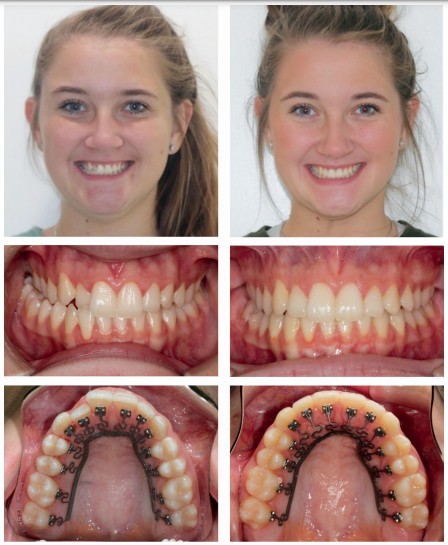Read about how Dr. Mehdi Peikar, inventor of BRIUS, developed a preprogrammed orthodontic system that only uses non-sliding mechanics, but does so via Independent Tooth Movement.
Introducing the first orthodontic system providing independent tooth movement
Orthodontist/physicist who invented BRIUS
Dr. Mehdi Peikar, DDS, PhD, the inventor of BRIUS, created BRIUS to fix many of the issues he faced with the patients he was treating — namely, poor esthetics, long treatment time, and painful frequent visits for adjustments. Using his background in biophysics, he devised a system that would provide the best biomechanics possible by utilizing recent advances in 3D printing, material science, and artificial intelligence. Dr. Peikar received his orthodontic degree from UCLA, his PhD from Johns Hopkins in Biophysics, and his Master’s degree in Quantum Mechanics from University of Illinois at Urbana-Champaign (UIUC).

Novel orthodontic system
BRIUS, a new CAD/CAM orthodontic treatment system, allows orthodontists, for the first time, to move teeth independently. This lets the orthodontist move teeth from the initial to their final position with minimal round-tripping, which results in a more efficient treatment. Furthermore, one BRIUS is enough to complete mild to moderate cases.
The BRIUS system (Figures 1 and 2) is a preprogrammed orthodontic system that uses only non-sliding mechanics, but does so via Independent Tooth Movement (ITM). The BRIUS system is made of shape memory NiTi. It consists of an anchorage base and flexible arms, which connect independently to each tooth. The stabilizing anchorage base is the backbone of the entire system and is designed to lie 0.5 mm from the patient’s palate or lingual vestibule. Using the anchorage base, modification of arch form (maintain, expand, or constrict), and occlusal plane (maintain, tip clockwise, or counterclockwise) becomes possible should it be desired due to the anchorage base’s ability to apply force by design. Based on the movement of a particular tooth, the proprietary BRIUS algorithm uses advanced mathematical techniques to choose the arm that applies the ideal force/moment to said tooth. Furthermore, the anchorage base and arms all have a smooth surface with no sharp edges for patient comfort. Additionally, there is no wire between adjacent teeth, which makes flossing much easier for the patient.


Low-profile brackets
The BRIUS system can utilize any bracket system but currently uses the lowest profile bracket on the market, 2D® Lingual from Forestadent®. The unique connection between the BRIUS arm and 2D Forestadent bracket allows the BRIUS system to have complete control in all 6 degrees of freedom (3 translational and 3 rotational). The low profile leads to fewer debonds and also is significantly more comfortable for the patient.
The process is as follows:
- Orthodontist sends BRIUS the STL files, intraoral/extraoral photos, CBCT (suggested), and Treatment Plan instruction.
- BRIUS provides the doctor with a 3D virtual treatment simulation that includes roots and the bone if a CBCT is submitted.
- Upon approval from the doctor, BRIUS’s proprietary algorithm chooses which arm/spring will be selected for each tooth.
- The BRIUS and digital bonding tray (DBT tray) and brackets will be manufactured and sent to the orthodontist in less than 2 weeks.
- The orthodontist bonds the brackets with the DBT tray and places the BRIUS.
- Upon completion of treatment, BRIUS will accept a final scan and manufacture retainers for the patient.

This information was provided by BRIUS.
BRIUS is a new way that orthodontists can achieve tooth movement. Read about how Drs. Michael Mayhew and Keith T. Sellers achieve difficult tooth movements effectively and efficiently in their article: https://orthopracticeus.com/difficult-tooth-movements-achieving-quality-results-efficiently-effectively/
Stay Relevant With Orthodontic Practice US
Join our email list for CE courses and webinars, articles and mores


